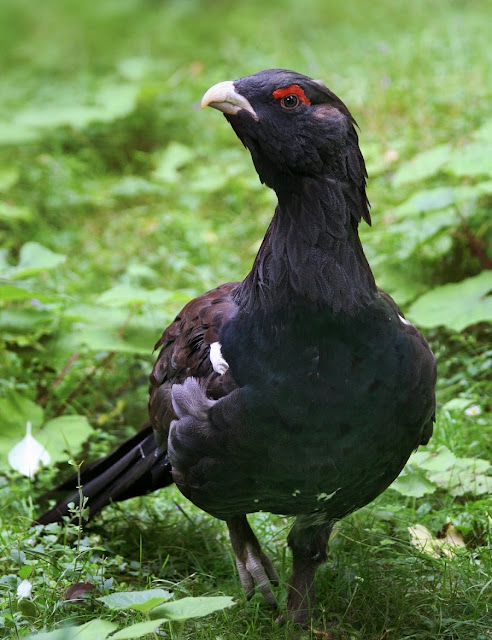Albania being a country that has a Mediterranean climate and wide open sea, gives the possibility of creating different habitats for different living things. In our country grow animals which are adapted to this climate and above all are rare animals. These animals have been endangered for years and this is due to the damage and alteration of their habitats. Specialists say this is related to a situation that for years has involved the animal world in our country, which in recent years is facing numerous problems and is finding little protection. Specialists express the necessity of organizing awareness-raising campaigns.
Here are some of the animals that are endangered of the disappearance in Albania:
 |
| Ursus arctos |
Brown bear (Ursus arctos) is the second largest type of bears family after the polar bear, reaching a weight of up to 861 kg (1900 pounds). Reaches a length of more than 2 meters and a weight from 250 kg to 816 kg. Brown Bear is one of the largest and most widespread carnivores in the world. This species is primarily spread to the Middle East and later spread to our region where the distribution of oak woods coincides. Usually we meet this kinde of Bear in mountainous areas covered with forests and shrubs. The diet of this bears is very variable and contains herbs, spices, roots, lentils, forest mana, poultry and mammals, honey and fruit. Generally, the brown bear moves overnight but sometimes and dayly. However we must say that they are not completely lethargic and can easily wake up, both sexes like to enter a protected place, like a cave, crevice or cavity during the winter months. Brown Bears are generally lonely, but can create large groups when discovering large sources of food. The breeding takes place from May to July. Pupils, generally 1 to 3 (rarely 4 or more), are born in January or early February, when the mother is in a lethargic condition.
 |
| Pelecanus crispus |
The Dalmatian pelican (Pelecanus crispus) grows in the Karavasta Lagoon and is one of the protected species in Albania as a special tourist attraction of the Myzeqean region. This big bird is the largest of Pelicans and one of the largest bird species that exist today.
 |
| Tetrao urogallus |
The Wild Cock (Tetrao urogallus). Is part of Tetraonidae family. And it has a length of 60-87 cm, while its when wings are: 87-125 cm. Very big bird. Males are dark colored and three times bigger than females. They climb in flight with a very strong clamor of wings. The flights are short, fast and straight. This kind of Cock is famous for the amazing flirtatious behavior of men, the long neck that holds it straight and the tail raised when puffed up. The male has a heavy beak, bent, yellowish. Women are brown with black stripes in the chest. They live in mountainous areas, in coniferous or mixed forests, in old rocky areas and in rocky places. At the end of spring they land in meadows where males perform flirtatious parades. The nesting starts from the end of April. The female emits 7 to 11 eggs, the incubation lasts 24 to 26 days and the babies are capable of short flights when they reach the age of 2-3 weeks. They are able to fly completely after 2-3 months. They eat pine and fir seeds, leafy leaves and flower buds.
 |
| Roe |
Roe - (Lat. Capreolus capreolus L.) is a wild animal and is permitted of hunting. The Roe lives in several countries of the world and also in Albanian lands.
The 'Horse of Cyqes' (
Neophron percnopterus) is distinguished by its special shape, of its wide wings and his short tale.
 |
| Neophron percnopterus |
It is counted as one of the largest birds in the Balkans with a wingspan length of about 2 meters.
 |
| Neophron percnopterus |
For those who do not understand what the disappearance of
Griffon Vulture means, it is sufficient to recall once that they are the best environmental cleaner or maintainer. An environment that Albania has turned it into a burnt land in these 26 years, disappearing from the territory not just poultry consumed by restaurants on the menu or as are hanged on walls, but also these other very important species ...
 |
| Griffon vulture |
The collapse of habitats has directly affected the life and reproduction of particular colonies. The loss and the fragmentation of habitats, uncontrolled hunting, especially during the winter, impoverishment and degradation of ecosystems, degradation and genetic erosion, deforestation, agriculture development, are the main factors of the disappearance of animal species or at threat of extinction. Any disturbance or form of hunting during the reproduction period results in the abandonment of nest and nestling, the abandonment of the cubs, and even in the interruption of the reproduction.Oculus News







